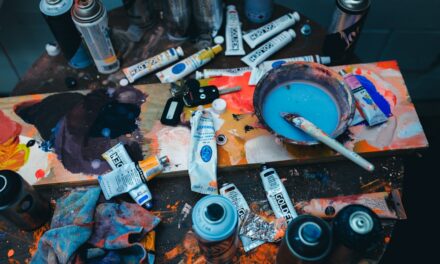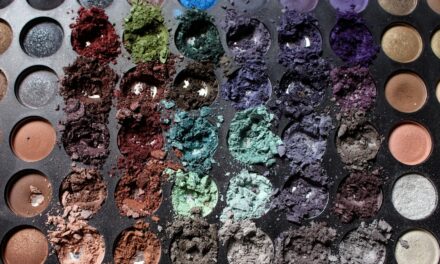Underpainting serves as a foundational element in pastel work, providing artists with a crucial base upon which to build their compositions. This initial layer not only establishes the tonal values and overall mood of the piece but also allows for greater depth and complexity in the final artwork. By laying down an underpainting, artists can create a sense of harmony and coherence that resonates throughout the entire piece.
The underpainting acts as a guide, helping to inform decisions regarding colour application and layering techniques as the work progresses. Moreover, underpainting can significantly enhance the vibrancy of the final artwork. When executed thoughtfully, it can create a dynamic interplay between layers, allowing the colours of the pastels to interact in ways that are visually striking.
The underpainting can serve as a unifying element, tying together disparate hues and tones, which ultimately leads to a more cohesive and engaging composition. In essence, the importance of underpainting in pastel work cannot be overstated; it is an essential step that lays the groundwork for a successful and impactful piece.
Summary
- Underpainting is crucial in pastel work as it provides a strong foundation for the final artwork and enhances the vibrancy of the colours.
- Choosing the right surface for underpainting is essential, as it can affect the texture and blending of the pastels.
- Techniques such as wet underpainting and layering can create a vibrant underpainting that adds depth and richness to the final artwork.
- Using complementary colours in underpainting can enhance vibrancy and create a dynamic visual impact in pastel art.
- Layering and blending techniques are key to achieving maximum impact in pastel art, allowing for depth and dimension in the final artwork.
Choosing the Right Surface for Underpainting
Selecting the appropriate surface for underpainting is a critical decision that can greatly influence the outcome of a pastel artwork. Different surfaces offer varying textures and absorbency levels, which can affect how the pastels adhere and blend. For instance, a textured paper can provide a rough surface that allows for greater grip, enabling artists to build up layers more effectively.
Conversely, a smoother surface may facilitate finer details but could limit the depth of colour saturation achievable in the final piece. When considering surfaces for underpainting, artists should also take into account the colour of the substrate. A neutral or mid-tone surface can serve as an excellent base, allowing for a balanced application of colours without overwhelming the composition.
Alternatively, using a coloured ground can add an additional layer of interest and complexity to the artwork. Ultimately, the choice of surface should align with the artist’s vision and desired outcome, ensuring that it complements rather than detracts from the overall composition.
Techniques for Creating a Vibrant Underpainting
Creating a vibrant underpainting involves several techniques that can enhance the overall impact of a pastel artwork. One effective method is to use bold strokes of colour to establish a dynamic foundation. Artists can employ broad, sweeping motions with their pastels to lay down large areas of colour, allowing for an energetic and expressive base.
This approach not only sets the tone for the piece but also encourages spontaneity and creativity during the subsequent layering process. Another technique involves using a wash or diluted medium to create a more fluid underpainting. By mixing pastels with water or an appropriate solvent, artists can achieve a painterly effect that allows for smoother transitions between colours.
This method can be particularly useful for establishing atmospheric backgrounds or soft gradients that will serve as a backdrop for more detailed work. Regardless of the technique chosen, the key is to maintain a sense of vibrancy and energy in the underpainting, setting the stage for a captivating final piece.
Using Complementary Colors to Enhance Vibrancy
The strategic use of complementary colours in underpainting can significantly enhance the vibrancy of pastel artworks. Complementary colours are those that sit opposite each other on the colour wheel, such as blue and orange or red and green. When placed side by side, these colours create a visual tension that can make each hue appear more vivid and dynamic.
By incorporating complementary colours into the underpainting, artists can establish a rich foundation that will amplify the vibrancy of subsequent layers. For instance, an artist might choose to lay down a warm orange underpainting before applying cooler blue pastels on top. The interaction between these complementary hues will create an optical effect that draws the viewer’s eye and adds depth to the composition.
This technique not only enhances vibrancy but also encourages a more engaging visual experience. By thoughtfully considering colour relationships during the underpainting stage, artists can set themselves up for success in achieving a striking final artwork.
Layering and Blending Techniques for Maximum Impact
Layering and blending are essential techniques in pastel work that can elevate an artwork’s overall impact. Once the underpainting is established, artists can begin to build up layers of colour, gradually adding depth and complexity to their compositions. The key to effective layering lies in understanding how different pastel brands and types interact with one another; some may blend seamlessly while others may create more textured effects.
Experimentation is crucial in this stage, as artists discover how to manipulate their materials to achieve their desired results. Blending techniques also play a vital role in creating smooth transitions between colours and enhancing overall vibrancy. Artists may use their fingers, blending stumps, or even soft cloths to gently merge colours together, creating soft gradients or subtle shifts in tone.
This process not only adds dimension but also allows for greater control over the final appearance of the artwork. By mastering layering and blending techniques, artists can achieve maximum impact in their pastel works, resulting in pieces that are both visually stunning and emotionally resonant.
Incorporating Texture and Mark Making in Underpainting
Incorporating texture and mark making into underpainting can add an exciting dimension to pastel artworks. Texture can be achieved through various methods, such as using different tools or applying pastels in varied ways—whether through scratching, stippling, or even using palette knives. These techniques can create interesting patterns and surfaces that invite viewers to explore the artwork more closely.
Mark making is another powerful tool that artists can utilise during the underpainting stage. By intentionally creating distinct marks or strokes with pastels, artists can establish rhythm and movement within their compositions. This approach not only adds visual interest but also contributes to the overall narrative of the piece.
When combined with traditional layering techniques, texture and mark making can transform an ordinary underpainting into a vibrant and engaging foundation that enhances the final artwork’s depth and complexity.
Tips for Preserving the Vibrancy of Underpainting
Preserving the vibrancy of an underpainting is essential for ensuring that it continues to shine through in the final artwork. One effective strategy is to work with high-quality pastels that are known for their pigment strength and lightfastness. These materials will maintain their vibrancy over time, preventing dullness or fading as layers are added on top.
Additionally, artists should be mindful of their application techniques; using too much pressure when layering can compress previous layers and diminish their luminosity. Another important consideration is the use of fixatives. While some artists prefer to avoid fixatives altogether due to concerns about altering colour or texture, others find them invaluable for preserving vibrancy.
If using fixatives, it is crucial to select products specifically designed for pastels and to apply them sparingly to avoid saturating or dulling underlying layers. By taking these precautions and being intentional about material choices, artists can ensure that their underpaintings remain vibrant throughout the creative process.
Examples and Case Studies of Successful Underpainting in Pastel Art
Examining successful examples of underpainting in pastel art can provide valuable insights into effective techniques and approaches. One notable case is that of renowned pastel artist Elizabeth Mowry, whose works often feature rich underpaintings that serve as vibrant backdrops for her landscapes. Mowry employs complementary colours strategically within her underpaintings, creating dynamic interactions that enhance her compositions’ overall vibrancy.
McKinley often utilises textured surfaces for his underpaintings, allowing him to create intricate layers that add depth and complexity to his pieces. His approach demonstrates how thoughtful surface selection combined with effective layering techniques can lead to stunning results.
These case studies highlight not only the importance of underpainting but also the myriad ways artists can approach this foundational stage in their pastel work. By studying successful examples and experimenting with various techniques, aspiring pastel artists can develop their unique styles while harnessing the power of underpainting to create vibrant and impactful artworks.
If you are interested in exploring the creative process further, you may enjoy reading the article The Artistic Journey. This article delves into the various stages an artist goes through to create a piece of art, from inspiration to completion. Understanding the journey of an artist can provide valuable insights into the techniques and methods used in creating vibrant and dynamic artworks, such as underpainting for pastels. By following the artistic journey, you can gain a deeper appreciation for the thought and effort that goes into each piece of art.


